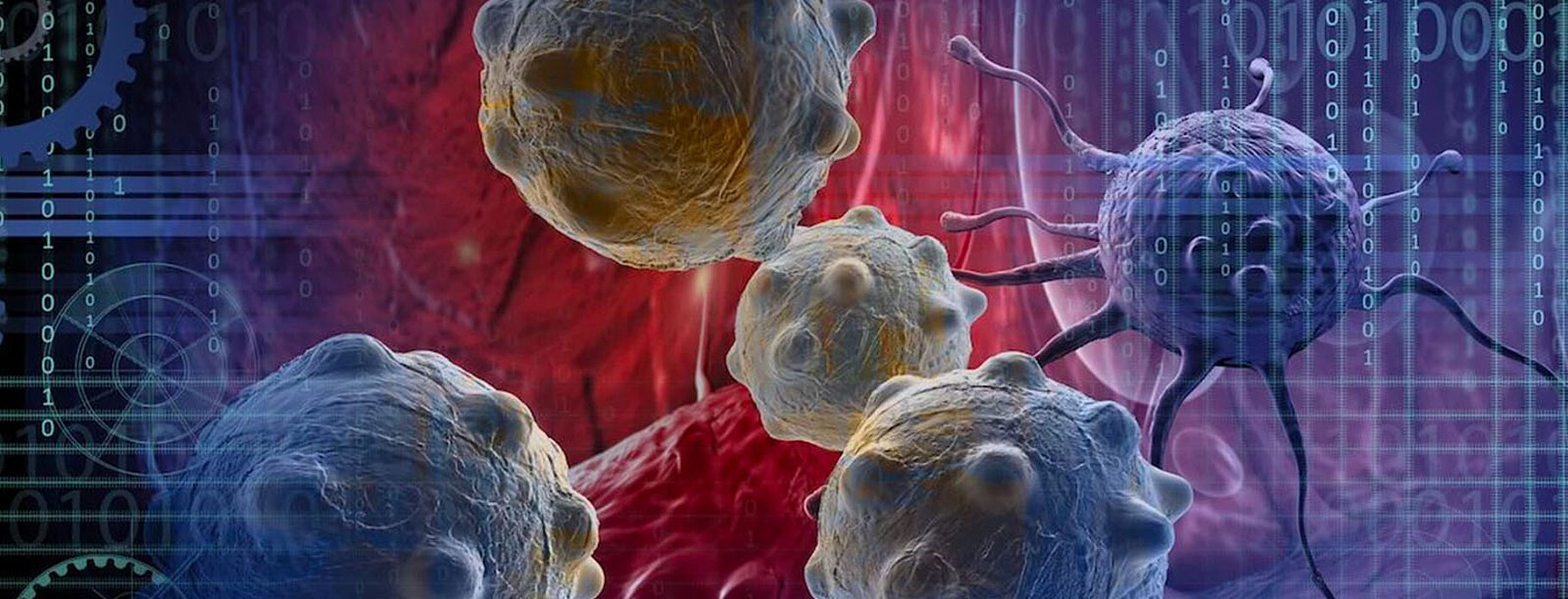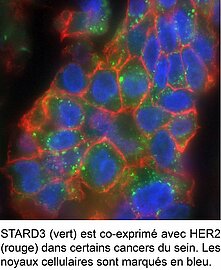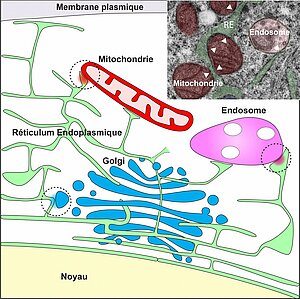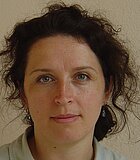
Molecular and cellular biology of breast cancer
Molecular and cellular biology of breast cancer
Our laboratory is interested in the cellular mechanisms deregulated in breast cancer.
Breast cancer is a heterogeneous disease with a high incidence. The fight against breast cancer presents challenges: tailoring cancer therapy to individual patients and identifying new therapies. The goals of our team are to understand how the deregulation of certain proteins and cellular functions in tumors impacts cancer growth and progression, and then use this knowledge to improve patient management.
The four main research areas developed in the team are:
- Characterization of the StAR related lipid transfer domain 3 (STARD3) protein which represents a vulnerability for HER2-positive breast cancers.
- Studying cellular structures called membrane contact sites that physically connect organelles.
- Determining the function of matrix metalloproteinase 11 (MMP11), a microenvironment protein involved in the tumor cell-breast adipocyte dialogue.
- The study of the link between environment and breast cancer.

Current projects
1: Molecular mechanisms of STARD3 addiction in HER2+ cancers
HER2 (Human Epidermal Receptor 2) is an oncogene activated by gene amplification in many cancers such as breast cancer (15-30%) and gastric cancer (10-30%). HER2 gene amplification leads to the co-amplification of several other genes including StAR related lipid transfer domain-3 (STARD3). The STARD3 gene has been identified in the laboratory and its expression correlates with that of HER2 in breast cancers suggesting that STARD3 plays a role in these cancers. Consistent with this idea, data from our lab and others show that inhibition of STARD3 expression results in a decrease of cell growth in all HER2+ cells, but has no effect on the growth of other cell lines.
The STARD3 gene encodes a protein that has no apparent link to HER2. STARD3 is a cholesterol transporter that acts at contact sites between the endoplasmic reticulum and endosomes.
Our project is to understand how this function of STARD3 promotes the growth of HER2+ cancer cells.
2: Inter-organelle contacts and lipid transport in cancer

Eukaryotic cells are compartmentalized into organelles, each with specialized functions. It has recently been recognized that the exchange of information and metabolites between organelles, in addition to vesicular transport, occurs at regions where the membranes of two distinct organelles come into contact in structures called membrane contact sites.
Our lab has shown that contact sites between endosomes and the endoplasmic reticulum (ER) created by the STARD3 protein (Alpy et al, 2013) enable cholesterol transport between these two organelles (Wilhelm et al, 2017).
The ER, which spans the entire cytoplasm of the cell, is a central in interorganelle communication mediated by contact sites. We have identified a receptor, named MOSPD2, localized on the surface of the ER, which enables the formation of contacts between the ER and many organelles such as endosomes, mitochondria etc... (Di Mattia et al, 2018). Recently, we have shown that the contact sites between the ER and other cellular organelles are regulated by phosphorylation.
Our project is to understand how contact sites are formed and regulated, and what their functions are in cancer cells.
3: Function of MMP11 in tumor metabolism
Matrix metalloproteinase 11 (MMP11) is a protein of the tumor microenvironment that is secreted by normal tumor cells (adipocytes and fibroblasts). Our work has shown that MMP11 participates in the communication between adipocytes and tumor cells, and modulates tumor metabolism.
Our project is to decipher the mechanism of action of MMP11 in the adipocyte-tumor cell dialogue.
4: Environment and breast cancer
Many epidemiological studies link the increase in breast cancer incidence to the environment. Some studies incriminate endocrine disruptors found in pesticides or even metals and present in our daily lives through foodstuffs, hygiene products, drinking water and the air we breathe. In order to know if there is a link between the environment and breast health, our research project, which is based on the Strasbourg breast tumor sample bank, is to measure various molecules (pesticides, metals) in the tumor and the peritumoral fatty tissue.
Publications
-
2005
-
Pleiotropic effects of Trefoil Factor 1 deficiency.
- C. Tomasetto
- Marie-Christine Rio
Cellular and Molecular Life Sciences ; Volume: 62 ; Page: 2916-20
-
Genetic determinants of pancreatic epsilon-cell development.
- R Scott Heller
- Marjorie Jenny
- Patrick Collombat
- Ahmed Mansouri
- Catherine Tomasetto
- Ole D Madsen
- Georg Mellitzer
- Gerard Gradwohl
- Palle Serup
Developmental Biology ; Volume: 286 ; Page: 217-24
-
The exon junction core complex is locked onto RNA by inhibition of eIF4AIII ATPase activity.
- Lionel Ballut
- Brice Marchadier
- Aurélie Baguet
- Catherine Tomasetto
- Bertrand Séraphin
- Hervé Le Hir
Nature Structural and Molecular Biology ; Volume: 12 ; Page: 861-9
-
[Trefoil factor 1 (pS2/TFF1), a peptide with numerous functions]
- Carole Mathelin
- Catherine Tomasetto
- Marie-Christine Rio
Bulletin du Cancer ; Volume: 92 ; Page: 773-81
-
MLN64 is involved in actin-mediated dynamics of late endocytic organelles.
- Maarit Hölttä-Vuori
- Fabien Alpy
- Kimmo Tanhuanpää
- Eija Jokitalo
- Aino-Liisa Mutka
- Elina Ikonen
Molecular Biology of the Cell ; Volume: 16 ; Page: 3873-86
-
Give lipids a START: the StAR-related lipid transfer (START) domain in mammals.
- Fabien Alpy
- Catherine Tomasetto
Journal of Cell Science ; Volume: 118 ; Page: 2791-801
-
Functional characterization of the MENTAL domain.
- Fabien Alpy
- Vinoth K Latchumanan
- Valérie Kedinger
- Agnes Janoshazi
- Christoph Thiele
- Corinne Wendling
- Marie-Christine Rio
- Catherine Tomasetto
Journal of Biological Chemistry ; Volume: 280 ; Page: 17945-52
-
Spatial and temporal distribution of the traf4 genes during zebrafish development.
- Valérie Kedinger
- Fabien Alpy
- Catherine Tomasetto
- Christine Thisse
- Bernard Thisse
- Marie-Christine Rio
Gene Expression Patterns ; Volume: 5 ; Page: 545-52
-
The role of the small bowel in the regulation of circulating ghrelin levels and food intake in the obese Zucker rat.
- Francesco Rubino
- Philippe Zizzari
- Catherine Tomasetto
- Marie-Therese Bluet-Pajot
- Antonello Forgione
- Michel Vix
- Dominique Grouselle
- Jacques Marescaux
Endocrinology ; Volume: 146 ; Page: 1745-51
-
Improvement in intramammary sentinel lymph node removal using a novel prototype hand held probe during breast conservative surgery.
- Carole Mathelin
- Catherine Tomasetto
- Marie-Christine Rio
- Marie-Pierre Chenard
- Jean-Philippe Brettes
- Jean-Louis Guyonnet
Breast Cancer Research and Treatment ; Volume: 89 ; Page: 305-8
-
Members
PhD students
Engineers
Trainees
Collaborations and networks
Guillaume Drin, IPMC, Valbonne FR
Jean Cavarelli, Alastair McEwen et Pierre Poussin-Courmontagne, IGBMC
Toshihide Kobayashi, Faculté de Pharmacie, Illkirch, FR
Jean-Michel Brunel, MCT, Marseille, FR
Yves Nominé, IGBMC
Rachid Thiam, ENS Paris, FR
Tim Levine, UCL, London, UK
News
![[Translate to English:] [Translate to English:]](/fileadmin/_processed_/2/6/csm_Mathlelin_0f70db3f93.jpg)
Carole Mathelin, first woman elected President of the French National Academy of Surgery
« I am enthusiastic about continuing the work of all those who have gone before me, by supporting, promoting and disseminating the excellence of…
Read more

